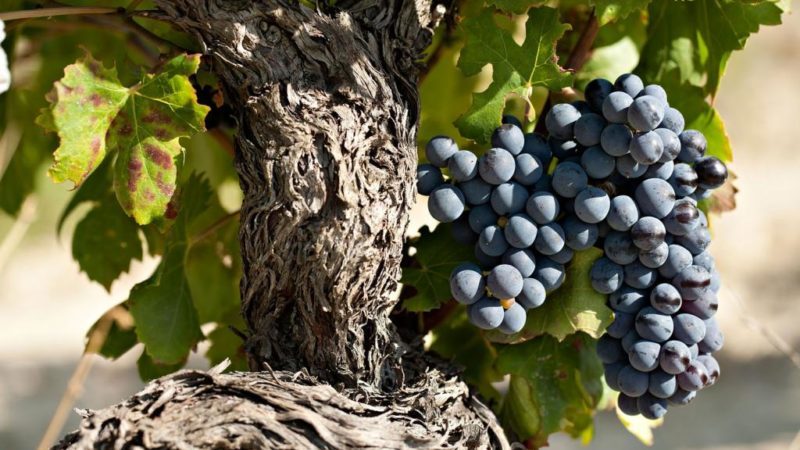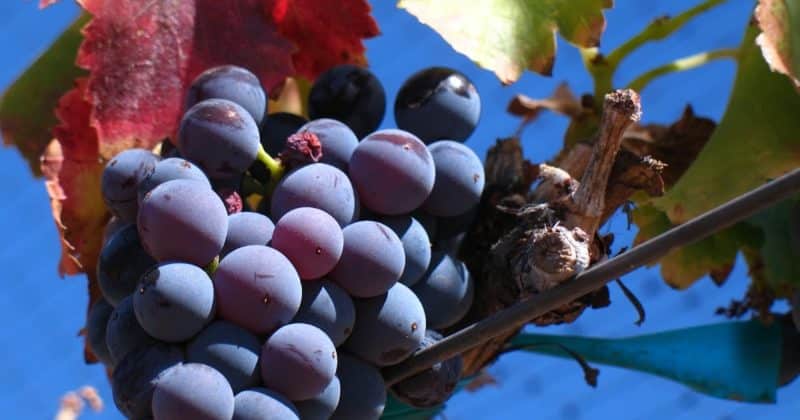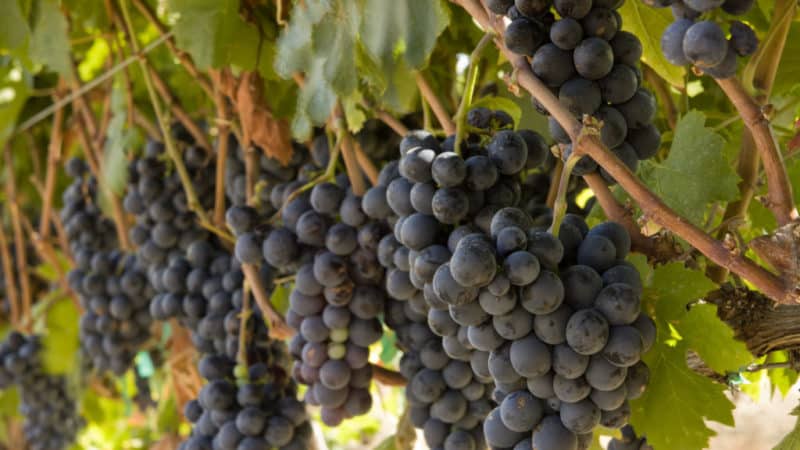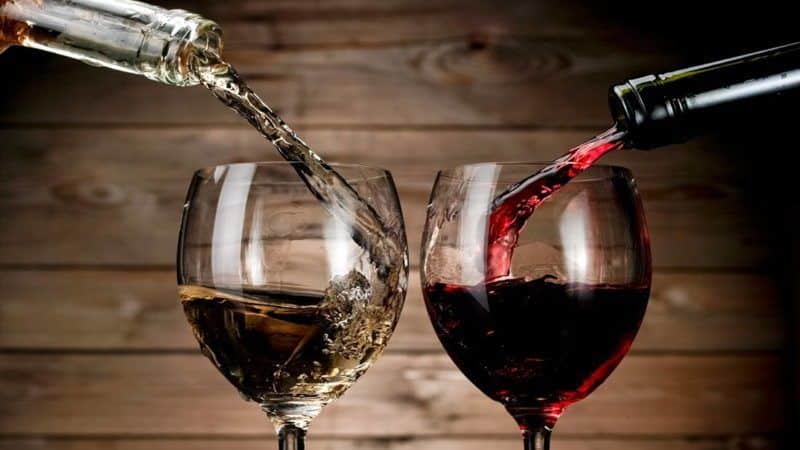Heat-loving, high-yielding grape variety Garnacha (Grenache)
Garnacha is a grape variety native to either Catalonia or Sardinia. Ampelographers (grape crop specialists) still cannot come to a consensus regarding the origin of the variety. The culture is most widespread in Spain, Italy, France, California, Australia, and Israel. These grapes produce rich ruby red tannic wines with aromas of black pepper, spices, smoke, tobacco and delicate, harmonious rose wines.
Description and characteristics of the Garnacha grape variety

Garnacha or Grenache is the star variety in the Spanish Priorat. Here it is called Garnacha Tinta, Uva di Spagna, Lladoner, Tinto, Tinto Aragones, Tinta, Roussillon Tinto, Tintilo de Rota, Tinto Menudo, Tinta Mencida.
In Sicily this grape variety is known as Granaccia, on the island of Sardinia - Cannanou, in France - Grenache Noir, Alicante, Carignane Rousse, Roussillon, Sans Pareil, Rivesaltes, Aragonais, Rouvaillard, Redondal, Ranconnat.
Origin story
The exact time of appearance of the variety is unknown. Some ampelographers believe that this grape originated in Catalonia, from where it spread to Navarre (Spain), Languedoc-Roussillon (southern France) and Sardinia. However, the inhabitants of Sardinia are confident that it was on their island that Grenache appeared, and from here it came to Spain in the 14th century.
The variety received its name in honor of the wine-growing region in Liguria - Vernazze. Initially it was called Vernaccia, later the name changed to Garnacha.The most popular red variety, white and pink grapes are rare and mainly in France.
According to another version, Grenache was developed in the north of Aragon, a territory bordering France. For a long period, red wines with a bright taste and high content of alcohol and tannins were made from it. Later, the French managed to fully unlock the potential of the grapes by adding blends and softening the taste of the drinks. In the south of France, wine must was not left to steep on skins for a long time, which resulted in the production of a light rose wine, which became popular among connoisseurs of the drink.
The current position of the variety is ambiguous. Despite the importance and richness of Grenache, until recently single-varietal wines from it were produced in small volumes. Only at the beginning of the 21st century did the Spaniards return to their roots and begin to re-produce red wines with a strong taste, gradually restoring the popularity of the variety.
Description of grapes

Garnacha is a high-yielding and heat-loving variety that thrives in heat and drought conditions.. It has taken root on rocky, dry Spanish soils and is distinguished by its high adaptive abilities to sandstones and limestones in other countries. Grenache is grown in smaller quantities in fertile valleys with moderate humidity, since a large amount of moisture negatively affects the growth and development of the plant - fungal infection and aphids occur.
The vine blooms early, but the growing season is quite long, and therefore the berries fall unripe. Nevertheless, winemakers consider this feature unique; against the background of a decrease in yield, the remaining berries absorb all the beneficial substances from the vine, which is best manifested in wine.
Grenache is part of the Western European group of grape species that are characterized by a late ripening period. Since this variety grows mainly in hot climates, its wines contain 15% alcohol or more. In varietal wines, Grenache exhibits spicy berry notes and the most pronounced raspberry aroma. The technical variety Garnacha is used exclusively for wine production and is not suitable for fresh consumption or long-term storage.
Interesting. The calorie content of fresh berries is low - only 70 kcal per 100 g. The calorie content of finished wines is unchanged, however, the energy value juice doubles due to large amounts of fructose and glucose.
The bushes are characterized by great growth vigor and form an average number of stepsons. The trunks are powerful, allowing the bush to survive even as a free-standing plant. The vine is characterized by resistance to dry and windy weather and is able to grow in the hot Californian and Australian climates. The root system is strong and can survive without water for a long time.
The leaves are small or medium-sized, five- or three-lobed, serrated along the edges. The leaf plate has a curved shape and resembles a funnel. The front side of the leaf is glossy, and the back is covered with a slight cobweb-like edge. The vine ripens completely.
The clusters are medium sized, conical, medium dense or very loose. The berries are round, small, lilac or dark purple in color with a slight waxy coating. The skin is dense and thick. The pulp is juicy and sweet.
Place of growth and climate directly affect acidity levels. Often acid levels remain below average.When grapes are cultivated on rocky and shale soil, sweet berries with a high level of tannins are formed, from which rich wine is produced that can be stored for decades. When growing Grenache in an arid climate, the yield is about 20 c/ha.
Growing regions
The Grenache variety is widespread not only in European countries (Italy, Spain, France) but also in the USA (California), Australia, and Israel. In the south of France there are clones of the variety: Grenache rosé (pink), Grenache gris (gray) and Grenache blanc (white). The white variety produces soft white wine with a dense structure.
For a long time, grapes confidently held second place in terms of area occupied landings, but in the 19th century, winemakers switched to growing Merlot and Cabernet Sauvignon varieties, and Grenache took fourth place in popularity. This was facilitated by the EU's campaign to uproot vineyards to drain Europe's "wine lake".
World plantings of Grenache occupy 200 thousand hectares, which exceeds the area under Pinot noir. Paradoxically, Grenacha is little known to consumers, despite its enviable distribution. In wine stores, buyers often pay attention to Malbec, Pinot Noir or Carménère.
This is explained by the fact that in many wine-growing regions it is not possible to obtain single-varietal, high-quality wine from Grenache due to its varietal characteristics. Many drinks made from this grape have a very ordinary taste, dense texture, pale color and contain more than 14% alcohol.
Therefore, producers make every effort to keep the variety’s yield under control and use various growing technologies to obtain a rich ruby color and improve the taste.
Interesting, but on the poor rocky soils of Châteauneuf-du-Pape, meticulous winemakers use a merciless method trimmings Grenache produces delicious red wines that reveal their qualities as they age.
Taste qualities
The taste and aroma of the Granacha variety are ambiguous. In the single-varietal version, the wine has notes of forest berries and spices, which are more pronounced in taste than in smell. Depending on the area, year, production technology and aging, Grenache exhibits fruity, morocco, woody, raspberry, strawberry and herbal notes.
Advantages and disadvantages

Advantages of the variety:
- resistance to drought and winds;
- developed root system;
- strong vine;
- high sugar content;
- frost resistance down to -18°C;
- unpretentiousness to the composition of the soil;
- resistance to fungal diseases.
Flaws:
- decreased taste with high yields;
- development of powdery mildew and the appearance of aphids in conditions of high humidity.
Grenache wine

The following wines are made from these grapes:
- in Spain - Alvaro Palacios L'Ermita;
- in California - Sine Qua Non;
- in France - Chateauneuf-du-Pape;
- in Australia - Torbreck, Clarendon Hills.
Characteristic aromas:
- without aging in oak barrels: spices, freshly ground black pepper, red berries;
- with long aging in oak barrels: spices, vanilla, black pepper, berries;
- with long-term aging in barrels and bottles: toasted toast, smoke, tar, tobacco, humidor (cigar storage box).
The Grenache grape is capricious, somewhat reminiscent of Pinot Noir and requires a special approach. At first, the variety had a bad reputation, until winemakers were found who unlocked its potential. Rene Barbier and Alvaro Palacios in the early 80s.of the last century, they bought abandoned hundred-year-old vineyards in the Priorat mountains, growing on stones. At the beginning of the 21st century, they began to create masterpiece wines in the spirit of the new time - exquisite, rich, terroir-rich.
Reference. The bouquet of terroir wines captures the general characteristics of wines from a specific territory. Such drinks are controlled by origin. The type and composition of the soil, climate, location of the vineyard and wine making technology are taken into account.
In France, Garnacha is valued for its “plasticity” - wines of various styles are created from the berries. Mourvèdre and Syrah grapes are used to produce typical French wine. The result is a drink with a berry aroma that is both delicate and complex. In the south of France, they prefer wine with a floral, harmonious aroma.
Spanish winemakers do not stand on ceremony with Grenache, creating an aromatic, powerful mono wine or complicating it with Tempranillo and Monastrell.
Americans and Californians are trying to be creative and create single-varietal wines, interesting blends and unexpected stylized light pink and burgundy-red tannic wines. Fortified drinks are also popular in Australia, creating an analogue of Portuguese port - combining Grenache with Shiraz and Mourvèdre.
Planting seedlings
Under landing choose sunny areas on the south or west side. The most favorable period for planting is April.
The site is first dug up, the heavy clay soil is loosened by adding sand. Pits are formed with dimensions of 80x80 cm, drainage is placed at the bottom - brick or crushed stone. A layer of earth is poured on top.
For planting, choose healthy and strong seedlings with a green top cut. Healthy roots are white.Before planting, seedlings are immersed in water with the addition of a growth stimulator (Kornevin, Epin). Next, they are planted in prepared holes, maintaining a distance of 1.5 m, the roots are straightened, soil is poured on top, lightly compacted and watered generously with warm water. A support for further garter is installed next to each seedling.
Subtleties of further care
The first year of seedling development is considered the most important. With proper care, the bushes take root better and grow faster.
Basic rules of care:
- Intensive watering is provided only during planting. In the future, the bushes do not need it, since they prefer drier soil.
- After planting, the tree trunk circle is mulched with sawdust, straw, and dry grass to prevent the growth of weeds and the spread of infections and insects.
- The grown shoots are tied to a support, setting the desired direction of growth.
- In summer, periodically inspect the leaves for fungal infections.
- Grenache is fertilized once. For this purpose, nitrogen, potassium, phosphorus, zinc and copper are used. Example of a nutrient solution: 20 g of superphosphate, 10 g of ammonium nitrate and 5 g of potassium salt per 10 liters of water.
- In autumn, pruning of mature vines is carried out after the end of sap flow. Only the lower shoots are removed, giving the bush a fan shape. This helps the grapes distribute resources and not waste energy on a large number of branches.
- In the first year after planting, young bushes are covered for the winter agrofibre, which is removed in early spring. Considering the main regions growing grapes, winters here are not harsh.
Disease and pest control
In general, the Grenache grape variety has strong immunity and rarely gets sick in a dry climate that is comfortable for it. Problems arise when air and soil humidity increases. Most often, the vine is affected by powdery mildew. To treat bushes, Bordeaux mixture and preparations with colloidal sulfur are used.
To protect grapes from wasp attacks, the bunches are placed in a mesh or fabric bag. To kill aphids, insecticides are used, for example, Fozalon or Kinmiks.
Harvest and storage
The bunches are cut with pruning shears in dry, sunny weather and immediately sent for processing. Technical grape varieties are not subject to long-term storage.
Conclusion
The Garnacha grape or Garnache is a heat-loving ancient variety. Ampelographers consider its homeland to be the Spanish Navarre or the island of Sicily. The crop shows the best results when grown on dry and rocky soil, in hot and arid climates, and does not tolerate waterlogging and drafts. Grenache is used to make red wines with rich taste, aroma and alcohol content of at least 14%. In the south of France, they prefer to make light rosé wines from this variety.
The plant has strong immunity and only suffers from powdery mildew in conditions of high humidity. The bushes do not need intensive watering, fertilizing is applied once, and pruning is done in the fall to form bushes and remove mature vines.